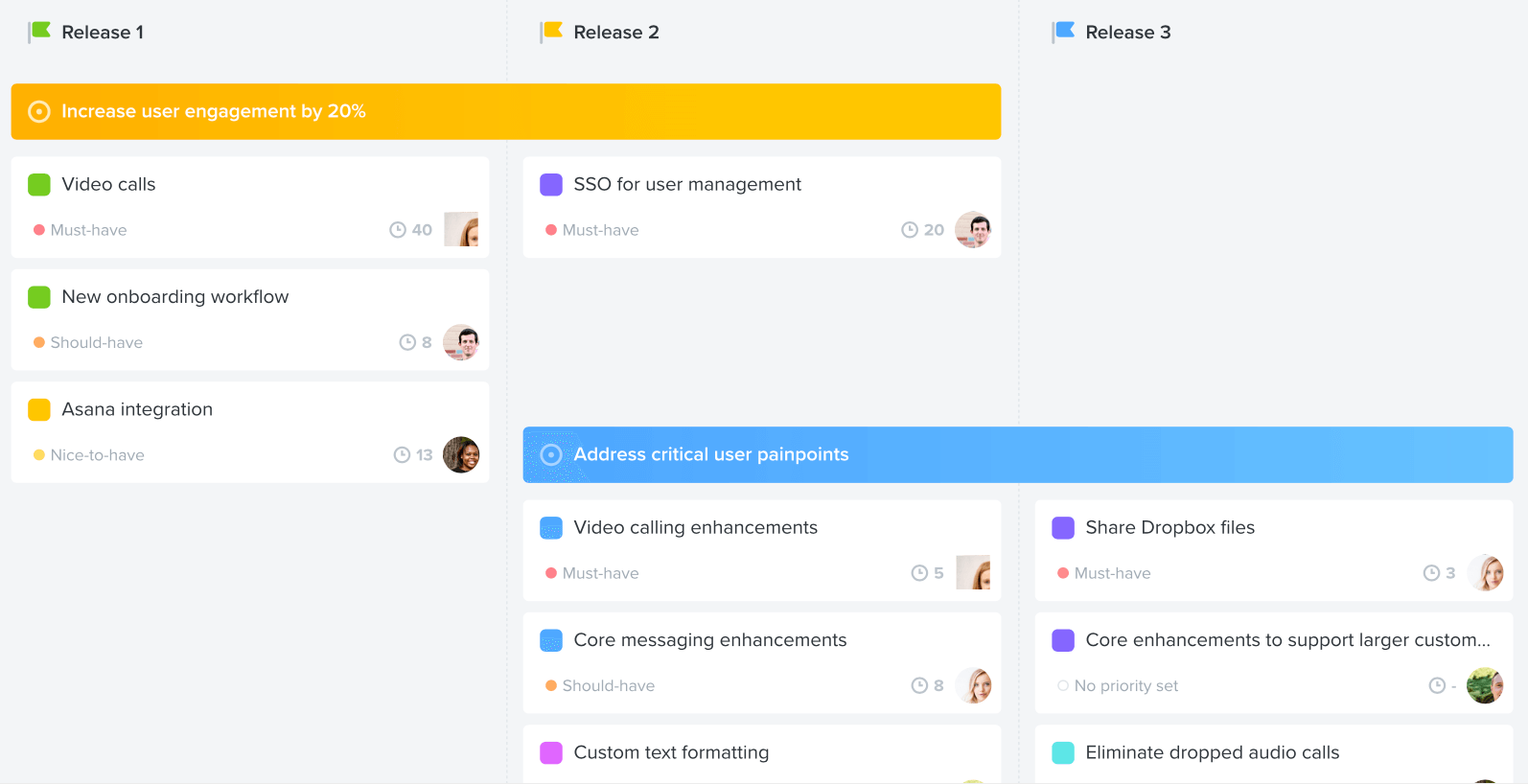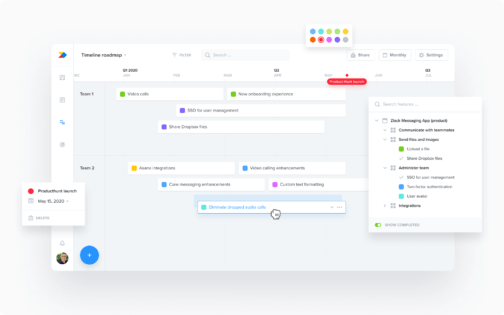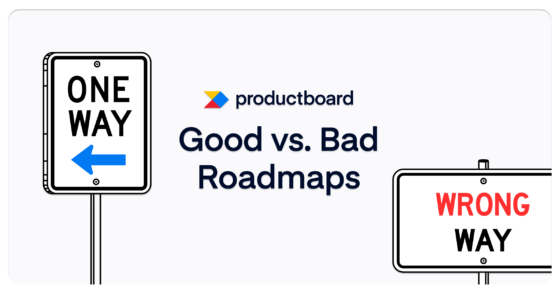How to build an outcome-driven product roadmap — a step-by-step guide

True product leaders ensure that product management is not a black box. For them, roadmaps are strategic tools — how they build transparency and communicate what’s next for the product.
Done well, product roadmaps are not static documents of what features will be delivered when. They’re dynamic visualizations (closely linked to the product plan) that showcase the outcomes the product team is working towards and how they support the organization’s overarching goals.
So, how do you create an inspiring, outcome-driven product roadmap?
“A good roadmap is a strategic communications tool, a statement of intent and direction, and, done well, a way of rallying the whole organization around the key problems that must be solved to achieve your product vision.”
Before you embark on your roadmap journey, ask yourself these questions:
- Why do I need a roadmap in the first place?
- What’s the best format?
- How far in the future should it go?
- Who has access?
- Is it user-facing?
- How will changes be communicated? And how often?
- What criteria will we use to add something to the roadmap?
Our step-by-step guide will show you how to build product roadmaps that rally everyone in the organization around where the product is headed and why.
Step 1: Align on product vision, strategy, and objectives
Let’s start with some definitions.
As Roman Pichler puts it, the product vision “is the overarching goal you are aiming for, the reason for creating the product.”
Product strategy is your plan to bring your product vision to life—it clearly outlines what you aim to achieve.
Objectives are clear, measurable goals aligned with specific outcomes you’re striving to achieve for your customers, product, and business.
A good product roadmap visually communicates your product vision, strategy, and objectives in a way that everyone can understand and unites the product team behind a common and documented purpose.
To define a clear product vision and strategy, consider what type of long-term outcome and benefit you want to deliver to your users. This is a collaborative process where product leaders work with executives to translate company vision and strategy into a product vision and strategy.
When creating your product vision and strategy, it’ll be helpful to consider the following:
- What you want to achieve in the near-term, mid-term, as well as further into the future
- Insights from prospects, colleagues, and customers
- Market trends
- Technological trends
- Competitive intelligence
- The company’s business model
- Unique differentiators
Once product vision and strategy are set, product teams can break them down into objectives to tackle over the near- to mid-term in relation to key date-based milestones (like when they’ll need to raise money again, for example).
Product objectives should be high-level enough to represent a worthy outcome for your customers or product, yet specific enough to help guide your prioritization decisions around which features to build next. They can be derived “top-down” from company objectives or “bottom-up” based on user insights you’ve received, market intelligence you’ve gathered, or your product strategy.
Here are a few examples of good product objectives:
- Help users perform core job-to-be-done X
- Close core feature gaps experienced by user role Z
- Expand customer base to three new region
Step 2: Prioritize what to put on your product roadmap based on desired outcomes
Once you align the product team behind a common product vision, strategy, and objectives, it’s time to prioritize the products and/or features that will go on your roadmap. The following inputs are a great place to begin:
- Insights from prospects, colleagues, and customers
- Market segments that your product serves
- Date-based milestones, such as conferences, industry events, or marketing campaigns
- Capacity planning—what is the bandwidth of your team?
This step can become a little overwhelming given the sheer volume of information you’re working with, as well as the competing needs of stakeholders from both in- and outside your organization.
Support may want to focus on fixing bugs, for example, while sales is more interested in a new feature requested by a promising prospect. And though your customers are a valuable source of feedback, they tend to voice the solutions they think they need rather than their underlying problem.
Despite the challenges, gathering and synthesizing these inputs changes your thinking from “I know what we should put on the roadmap” to “We’re putting this on the roadmap because of XYZ.”
A product prioritization framework can help you take a more quantitative approach for assessing inputs. It can also be helpful to have a tool that organizes all of these insights in one place.
Check out our The essential guide to prioritization to learn more about this step.
Step 3: Build your roadmap to summarize your plan
Now it’s time to create a working draft of your roadmap that communicates the products and/or features you are building, when you will be working on them, roughly when they will be released, as well as why they are a priority vs. all of the options that were considered.
To make your roadmap informative and easy to understand for your end audience, try including these elements:
- Timeline. Even in the agile world, it is important to set expectations around when short-term, medium-term, and long-term features will roll out so other teams can plan around them. We’re not talking about specific dates or deadlines. Instead, show a general time, such as the month.
- Solutions. Communicate what features you want to roll out in the above timeline. You can be as high-level or as detailed as you want, just explain why you are including each feature to give context.
- Strategic context. Let all teams know where the product is headed and why you’re building these features next. Currently, only 44% of product teams are confident that their roadmaps reflect the strategic context behind what they’re building. If some roadmap decisions are hard for certain stakeholders to swallow strategic context helps them to understand the rationale behind tough trade-offs, even if they don’t personally agree with it
Step 4: Communicate your roadmap and rally the team
The final step is to rally everyone around the roadmap and empower them to get the information they need. For example, you can set up a regular meeting cadence or send emails updating the team about any product roadmap changes. Here at Productboard, we host a weekly product call that is open to the whole company where we look at a roadmap tailored for a large audience
Provide product roadmap access to all members involved in the product lifecycle—from development to go-to-market. An easy way to do this is through a product roadmapping tool like Productboard, where stakeholders can view and track changes at any time with a consistent, single source of truth.
With Productboard, you can manage access to the roadmap and hide certain features based on roles and permissions—every stakeholder’s roadmap can be tailored to their exact needs.
Once stakeholders have access, they can click on features and releases to learn more about the context, like what problem you’re trying to solve and which objectives you’re addressing. They can even see the customer feedback behind each feature or release. This self-serve approach is much more powerful than a static slide that’s quickly outdated and forgotten.
Keep in mind that roadmap needs vary from stakeholder to stakeholder. Using multiple roadmaps tailored to different audiences can be extremely helpful:
- Use delivery-specific roadmaps with granular timelines for development teams that want to know the details. Communicate objectives, status/stage of development, areas of your product, and account for other work they need to support. Leverage dependencies and capture risks.
- Use an objective-led roadmap focused on broad timelines for senior executives and stakeholders and make sure you include information such as the market opportunity and profit and loss details where needed.
- Use an objective-led roadmap with customer-facing teams like sales, marketing, customer success, and support to help them see what you’re delivering feature-wise to support your objectives and provide details on the target customer. Leave room in your roadmap for go-to-market activities.

You can see how this approach benefits all teams—engineering knows what they are accountable for and when. Customer success can thrill and delight customers and be clear about what you are and aren’t working on. Sales can close more deals because they can share with confidence what’s likely to be done and when. Product marketing can communicate new functionalities with great fanfare. And support can let customers know when new features are likely to be launched.
All without asking the already overburdened product manager!
. . .
Want to learn more about how to create your own outcome-driven product roadmap? Download our ebook, Charting your course: The building blocks of excellent product roadmaps.






